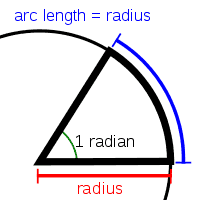
 Units & Measurements Units & Measurements |
|||||
| Standards and Units | Dimensional Analysis |
Units & Measurements - 01
Standards and Units
Base (Fundamental) and Derived Units
| Base Quantity | Unit | Symbol |
|---|---|---|
| length l | meter | m |
| mass m | kilogram | kg |
| time t | second | s |
| temperature T | kelvin | K |
| electric current I | ampere | A |
| amount of substance | mole | mol |
| luminous intensity | candela | cd |
Physical quantities can be divided into two categories: base (fundamanetal) quantities and derived quantities. The corresponding units for these are called base units and derived units.
The base units cannot be expressed in terms of further simpler quantities/units. There are seven base quantities/units in the SI system.
| Derived Quantity | Unit |
|---|---|
| area A | m2 |
| volume V | m3 |
| density ρ | kg/m3 |
| speed v | m/s |
| acceleration a | m/s2 |
| force F | kg m/s2 or N |
| pressure p | N/m2 |
| energy E | N m or J |
| power P | J/s or W |
There are further two supplementary SI units for angle and solid angle—the radian (rd or c) and the steradian (sr) respectively.
Derived quantities are those physical quantities which can be expressed in terms of combinations of base quantities. Some examples of derived quantities are given in Table .
The radian measure

The radian is defined as the angle subtended at the centre of a circle by an arc whose length is equal to the radius of the circle. For any angle subtended at the centre of a circle (denoted by θ in radians), if l is the length of the arc, and r the radius of the circle, then
One complete revolution of a circle encircles . Thus,
Unit Prefixes
In the metric system, the larger and smaller units are defined in multiples of 10 from the standard unit, and this makes calculation particularly easy.
Table lists some standard unit prefixes used in physics for the SI system.
| Power | Prefix | Symbol |
|---|---|---|
| 1,000,000,000 = 109 | giga- | G |
| 1,000,000 = 106 | mega- | M |
| 1,000 = 103 | kilo- | k |
| 100 = 102 | hecto- | h |
| 10 = 101 | deka- | da |
| 0.1 = 10−1 | deci- | d |
| 0.01 = 10−2 | centi- | c |
| 0.001 = 10−3 | milli | m |
| 0.000001 = 10−6 | micro- | µ |
| 0.000000001 = 10−9 | nano- | n |
| 0.000000000001 = 10−12 | pico- | p |
Some practical units used in physics
for lengths
- Angstrom (Å): For measuring distances at par with atomic sizes.
- Astronomical unit (AU): The mean distance between the sun and earth.
- Light year (ly): The distance travelled by light in one year.
for mass
- Atomic Mass Unit (amu or u): Defined as 1/12th the mass of one (carbon-12) isotope.
- Quintal (q):
- Tonne (metric ton) (t):
for area
- Acre :
- Hectare :
Unit conversions
Length units
Volume units
Pressure units
Energy units
Power units
Solved Examples
(a) (b) (c) (d) (Rex & Wolfson 2010, Physics, p. 15 #12)
The unit for density has to be converted from to .
(a) (b) (c) (d) (Adapted from: Rex & Wolfson 2010, Physics, p. 15 #13)
The conversion from mph to kmph would go like this:
 (c) If the angle intercepted at the eye by the Moon is 0.52° and the distance between the Earth and the Moon is , what is the diameter of the Moon? (Adapted from: Resnick, Halliday & Krane 2002, Physics vol 1, p. 12 #2)
(c) If the angle intercepted at the eye by the Moon is 0.52° and the distance between the Earth and the Moon is , what is the diameter of the Moon? (Adapted from: Resnick, Halliday & Krane 2002, Physics vol 1, p. 12 #2)
(a) By similar triangles, the ratio of the Sun-Earth distance and the Moon-Earth distance is the same as the ratio of the diameters of the Sun and the Moon. Thus, 390:1 is the ratio of their diameters.
(b) Now that we know the ratio of diameters of the Sun and the Moon, and volume of a sphere () is proportional to the cube of the radius (or diameter), the ratio of their volumes is 3903:1.
(c) If we consider the Moon's distance (r) as the radius of a 'great circle' with center at the observer's position on the Earth, and the diameter (D) of the moon approximating the length of the arc of the 'great circle' which subtends and angle of 0.52°, then,
The radius of the orbit of the spacecraft:
The length of the orbit (circumference)
Time taken to complete one orbit
Thus, speed:
List of References
Bibliography
| Standards and Units | Dimensional Analysis | ||||
 Units & Measurements Units & Measurements |
 JEE (Main/Adv)
JEE (Main/Adv) Mathematics
Mathematics Real Number System
Real Number System